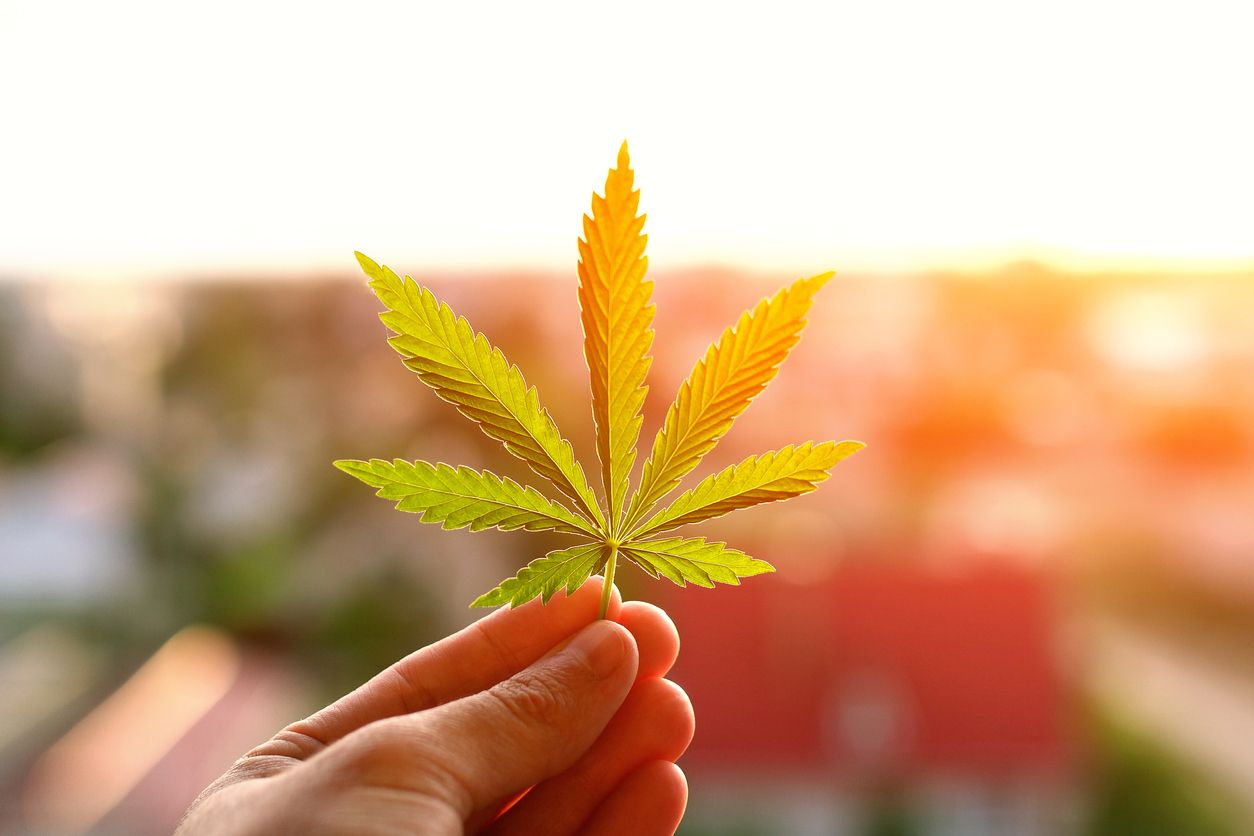Everything You Need to Know About How to Harvest Weed

After investing months of hard work, plenty of patience, and time into lovingly caring for your marijuana plants, it can then be easy to get a little anxious trying to figure out how and when to harvest your cannabis. Especially if money is tight and you are stuck thinking about how amazing your free weed could taste. The thing is, there is a “best time” to begin harvest, and there are several different ways to do it. So how long should you wait, and how do you tell if your plants are ready?
When is the ideal harvest time?
Unfortunately, growing pot is not an exact science in the average person's hands, and choosing when to harvest should depend on your own needs, which will vary significantly from someone else's. There are other high-cost options to test for exact potency and content of a plant grown, but the machines can cost thousands, and most takes time or come with the requirement to send a sample away to get results. A visual inspection and the answers to a few questions is all the average person should need to make an accurate prediction of the best time to harvest their plants.
Breeder recommendation
The recommended flowering time that will likely come with any seeds you purchase will give you an excellent base to work from. Usually, this time is the bare minimum that is required for the strain to reach full maturity, which does not mean that the plant will not continue to get better if left past that date. Instead, it should be considered the absolute earliest that a plant should ever be harvested.
Environmental Conditions
Are your plants growing in regular soil outdoors? Are they getting enough sunlight? Growing marijuana in soil isn’t nearly as effective or fast as an indoor hydro operation. Growing plants indoors under ideal temperatures (23°C-25°C) and providing the highest quality lights can easily knock off a week or two from the amount of time it will take the plant to finish.
Trichomes
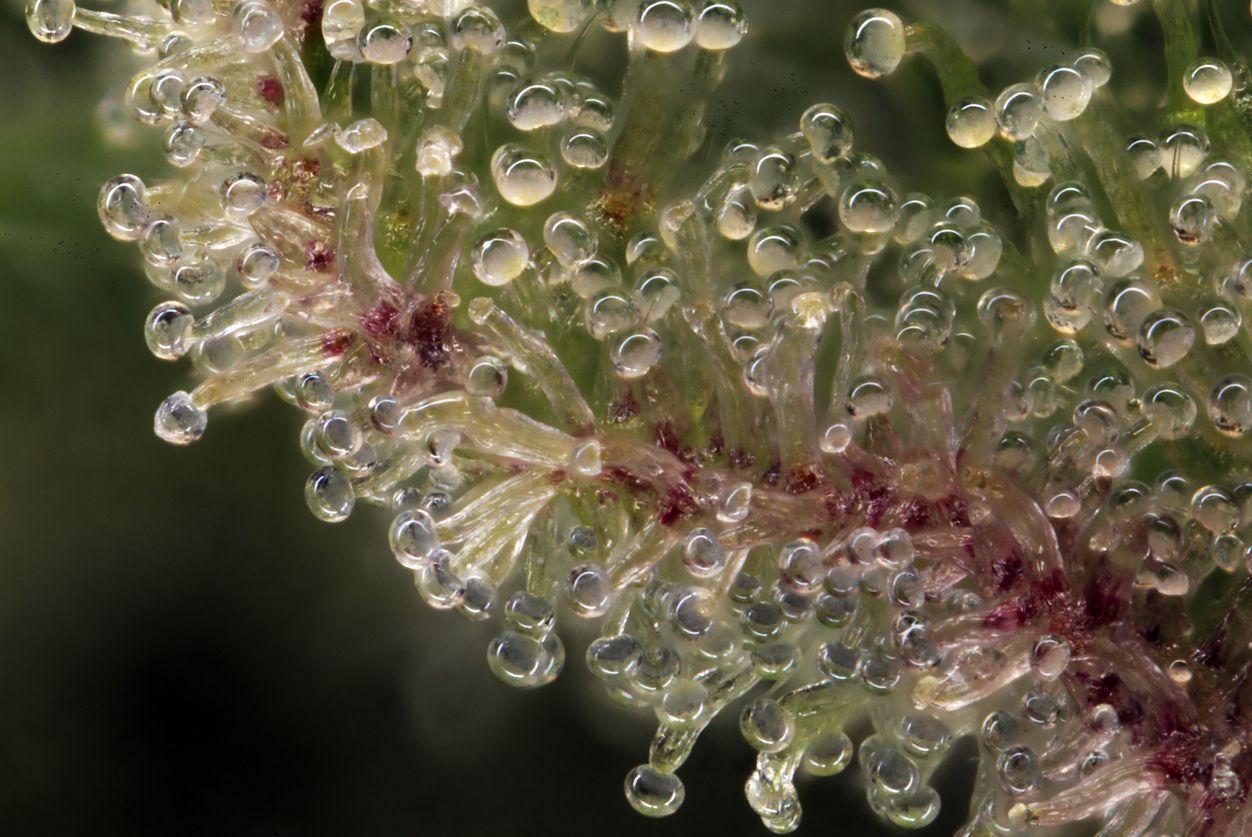
The trichomes are the portion of the flower that produces and contains the highest levels of THC. To view them, you must have at least a 30X - 100X microscope as they cannot be seen by the naked eye. There are 3 different colors that the trichomes will cycle through with each one being slightly more potent than the last until it reaches an amber color which signals the plant has reached its maximum amount of THC. Below you will find a list of all the different trichomes including colors to look for.
Different types of Trichomes
Capitate-stalked
These are the most common, and easiest to spot either by eye or with a magnifying glass, though still better viewed using a higher-end microscope. These trichomes are found in abundance around the buds on a cannabis plant.
Capitate-sessile
Capitate- sessile trichomes are a bit bigger than Bulbous and much more prevalent, which means easier to find. They can be found in the highest quantities around the tips of a bud and they look a lot like their very own tiny, liquid limb growing outwards.
Bulbous
These can only be seen through a microscope and can be found on the surface of any part of a female cannabis plant.
3 different colors of a Trichome’s cycle
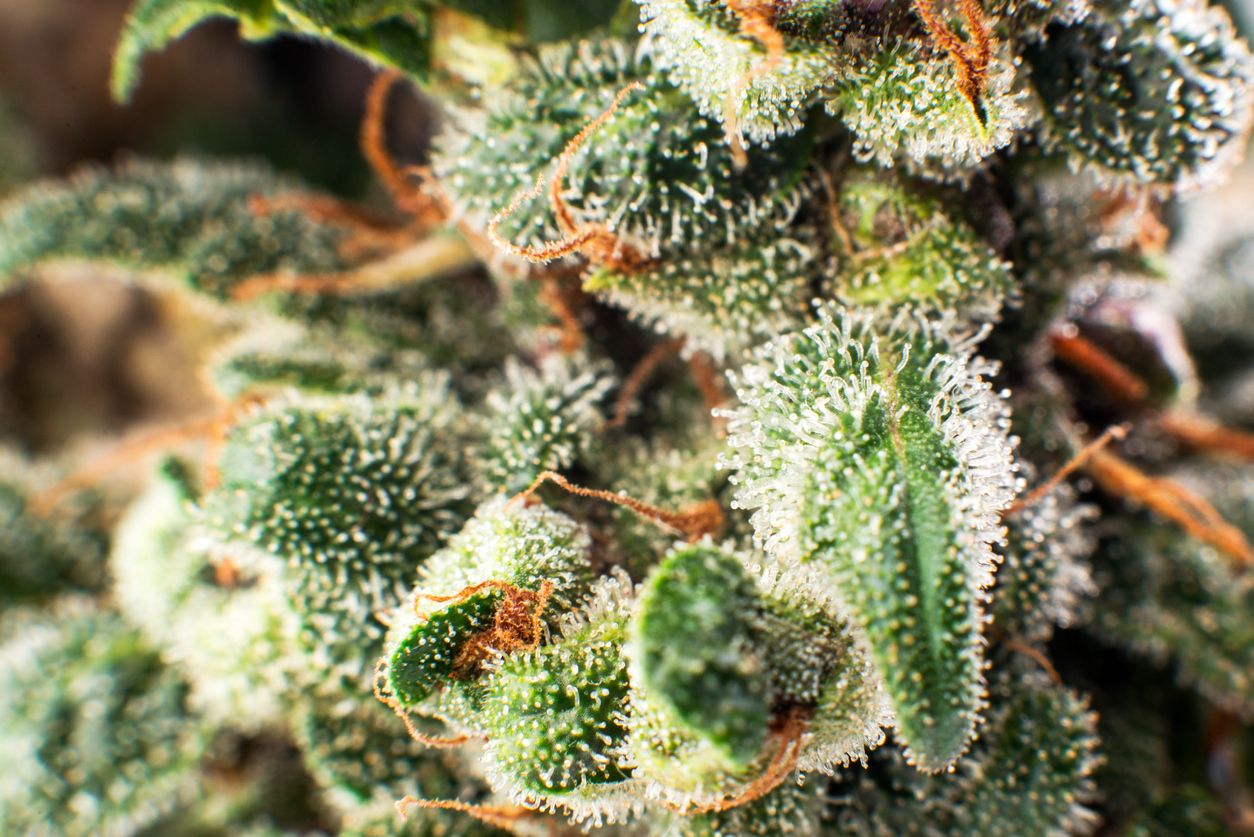
1. Clear
This is the first phase of the trichome and the least potent. Now just because it may not hold the strongest effects does not mean that they aren’t appealing to some growers. A clear trichome will produce a lighter, more energetic, and uplifting effect that can be perfect for those who dread that couch locked feeling and prefer to stay motivated.
2. Opaque
Opaque is the best of both worlds. Once the trichomes on a plant begin to look more of a cloudy white, it means that it has reached its second phase of maturity. The effects of a bud that is harvested at this point will provide a slightly stronger feeling than the last but will also stay on the lighter side, making small doses still effective for those who prefer to remain active while high.
3. Amber
This is the third and final phase of the trichome maturing process, which means it is also the strongest of the three. Once the trichomes on a cannabis plant look a deep orangish-red, they have reached their maximum potential. The felt effects will, as a result, be more sedative, relaxing, and intense.
Stigma and pistils
The stigma of a marijuana flower can be an excellent indicator of the plant’s overall maturity. They will slowly transform from a bright white to a dark brown color as the plant ages with an orange phase in between. Stigmas should always be brown before you harvest, no matter what your preference is. Pistils, on the other hand, can come in a variety of colors, but they do change much like the Stigma. Usually into a bright red or orange color that is a good indicator that a plant is ready.
Indica vs Sativa
Cannabis Sativa plants thrive best in hot and humid temperatures, and they can take a really long time to finish flowering, adding an average of a full 2 weeks to the length of time it needs to be ready for harvest. Indica strains, on the other hand, are much faster, without auto-flowering options even quicker. Sativa plants might at first appear to be growing the fastest because they get so tall, but it takes quite some time for the cannabinoids and terpenes to fully develop turning your marijuana buds into a high-quality harvest.
Tools you’ll need
Everyone enjoys the process of harvesting in a slightly different way, but there are definitely some tools of the trade that are considered to be relatively standard to keep on hand, including:
- Razorblade
- Sharpened scissors (or pruning shears)
- Gloves
- Something to hold all of the trimmed marijuana buds temporarily like a bag
How to harvest weed
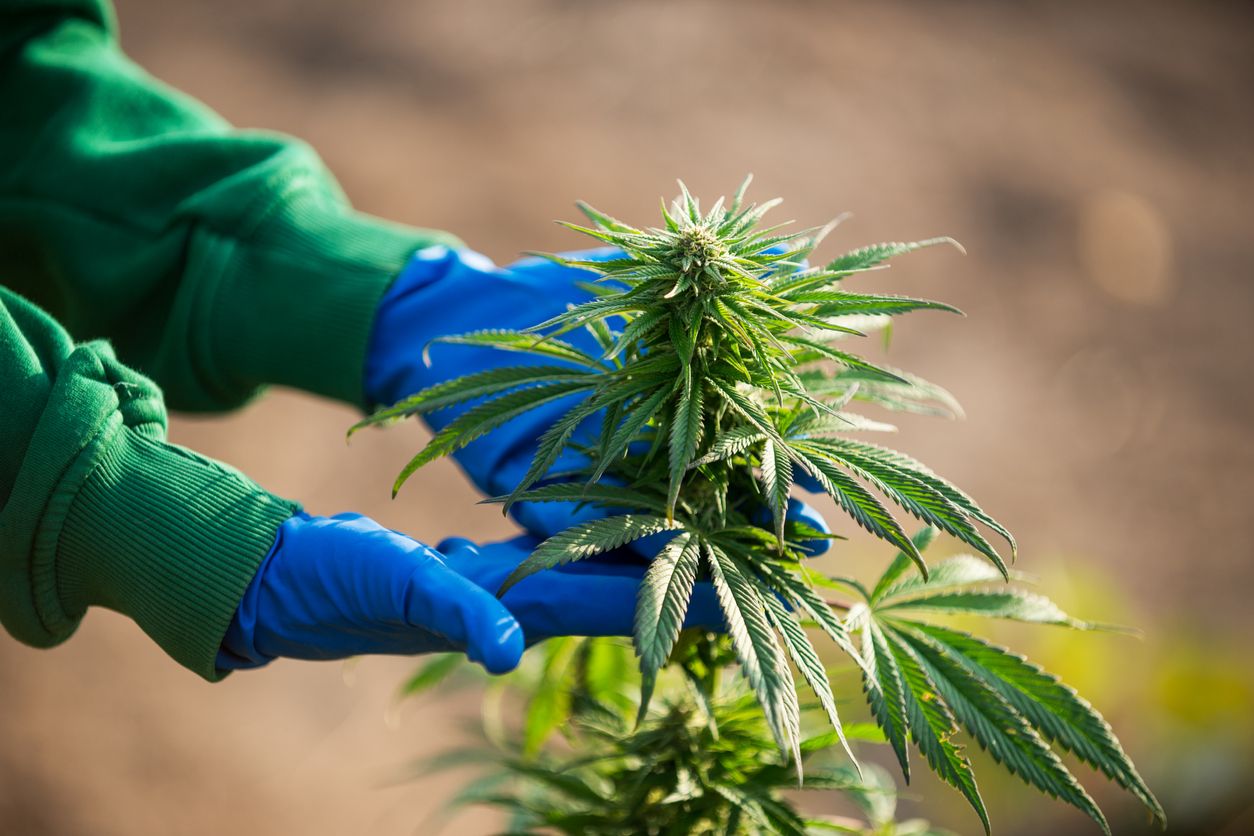
Now that you know how to check for maturity and potency of a marijuana plant and what tools you might need, the next step is deciding exactly how you would like to harvest them. The first thing you will need to do is prepare the room or area that will be used for drying as that may affect which method you will choose. There are 3 main ways to do this:
1. By the roots
If you are trying to be as fast as possible, then you may want to pull the entire plant outright from the base. This will pull up some roots and can get a bit messy, but some people swear by this method as the large stalks can act as great hangers. Unfortunately, this will bring in dirt and take up plenty of space, so it isn’t an ideal option for most people.
2. Individual branches
When harvesting weed, you can also choose to remove the branches one at a time. Leaving some stalk can help to keep the bud spaced out and makes them easy to hang dry. This can be done by getting a large sharp pair of scissors or shears and cutting each branch off at the base of the branch just before it meets the stalk. Once finished, you will be left with a completely bare stem that can be left for compost or to dispose of.
3. Colas only
This is the only method for many who are extremely limited in space for drying. Large single colas are easy to layer with newspaper to dry and take up the smallest amount of room possible. Often, it is possible to fit an entire plant within a shoebox to dry when it is harvested this way. To harvest by cutting individual colas, you should begin with the largest, located at the tips of the flowers, and slowly work your way down. A sharp pair of shear or scissors are needed to gently remove each bud one at a time at the base of the stem. Once you have the large colas removed, it will be easy to cut or pull off any tiny buds that remain.
Harvesting marijuana indoors
When growing cannabis plants inside of a house or greenhouse, you don’t have to be restricted by the colder temperatures, which might force you to harvest a crop early. It’s also easy to stay comfortable throughout the process in a climate-controlled atmosphere which will make you less likely to rush through the job.
Harvesting marijuana outdoors
Harvesting a cannabis plant that has spent its entire life outdoors is an entirely different story. Not only will it take longer to get through the flowering stage no matter the kind of strain chosen, but you remain subject to mother nature’s will, which could mean an early frost risking everything that you worked so hard to achieve. You’ll also lose an element of discretion, especially if you reside in a city or more populated area with neighbors close by.
Harvesting cannabis leaves
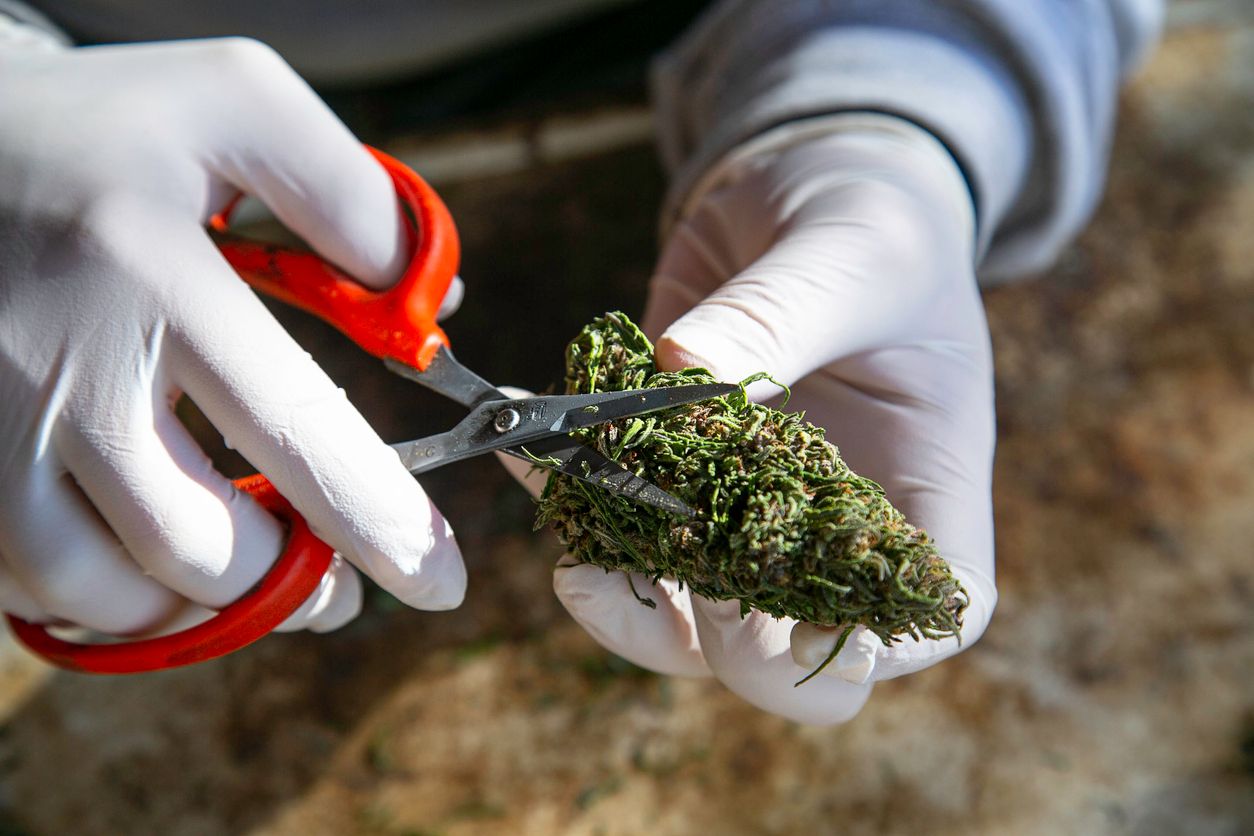
The only thing we didn’t touch on yet was the proper way to harvest marijuana leaf. Though the flowers are often the most sought-after portion of a cannabis plant, marijuana leaf will also contain many of the same components, just in smaller quantities. Leaves should be cut at the base of each fan leaf as the stems will provide absolutely no value.
The smaller leaves that are located on the flowers themselves can be cut away before the bud has been dried. Use a sharp pair of scissors to trim away any large protruding leaves that do not appear to be covered in crystal like the rest of the flower. This will leave your bud more potent and give you a little extra to add to your fan leaves for a concoction of your own.
After the harvesting process you can use your cannabis leaves to make teas, tinctures, creams, ointments, concentrates, and more.


